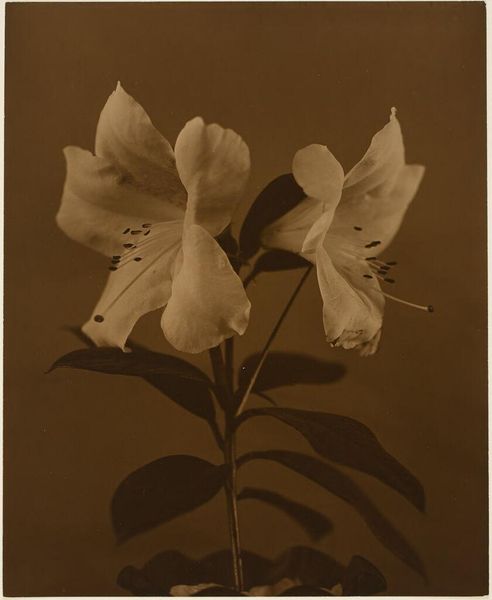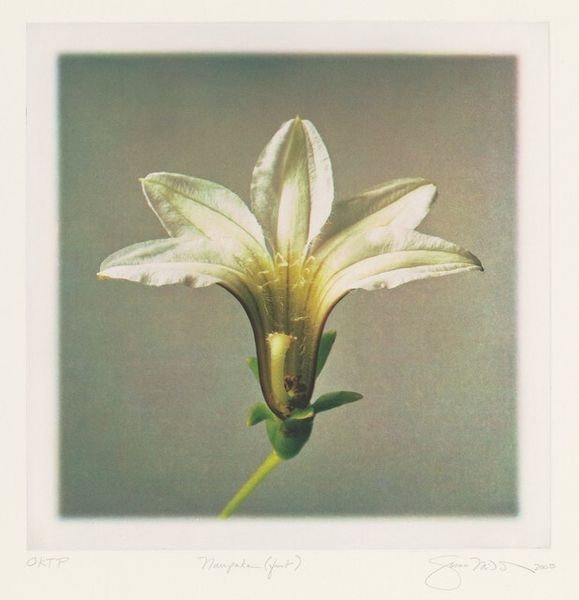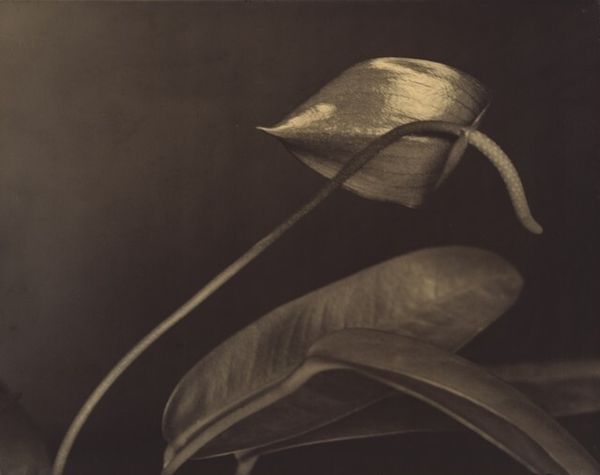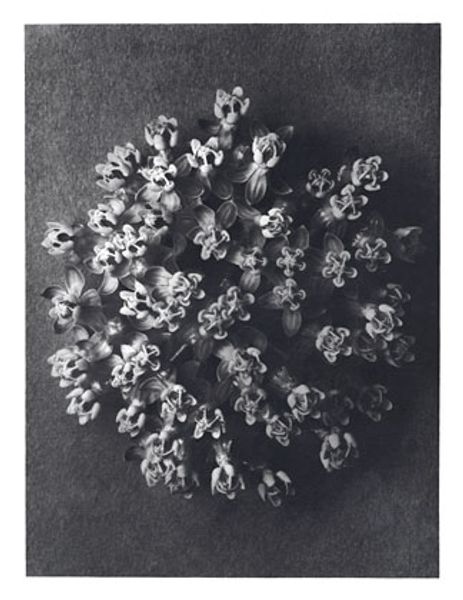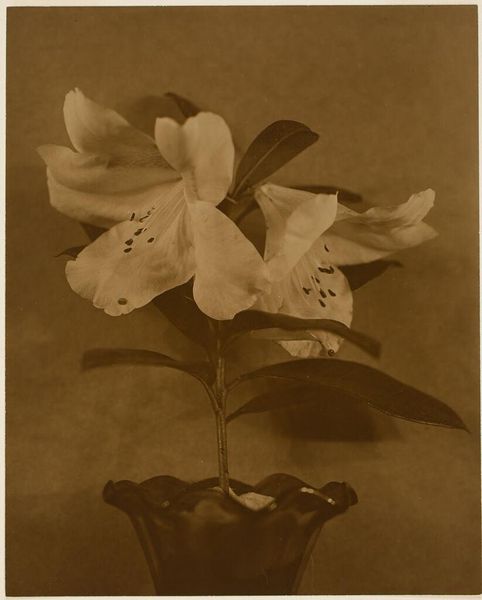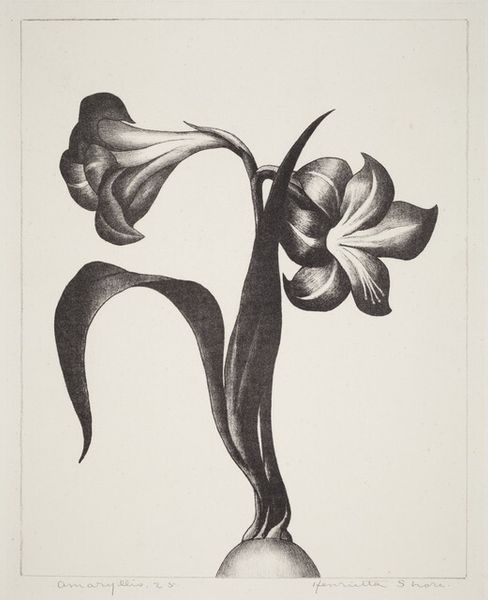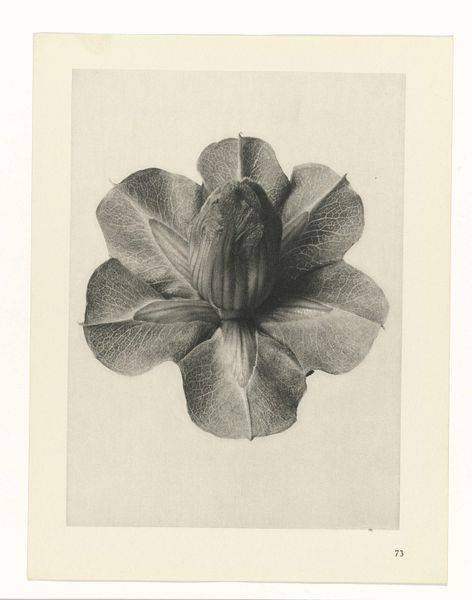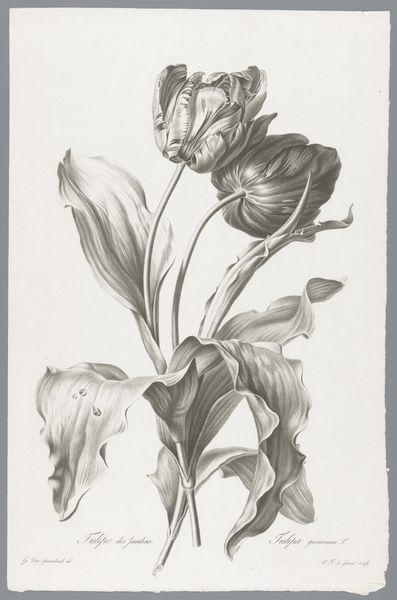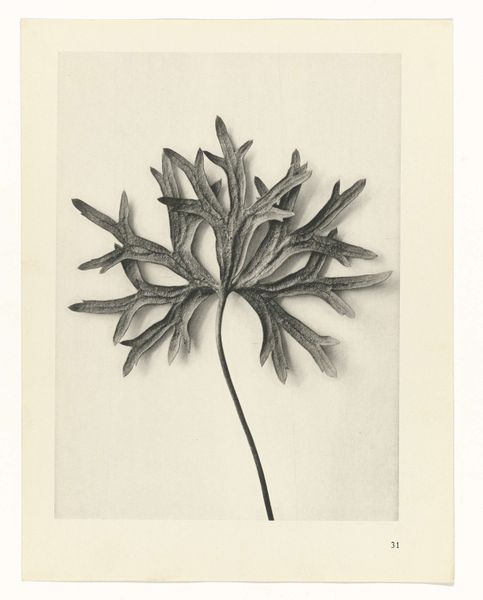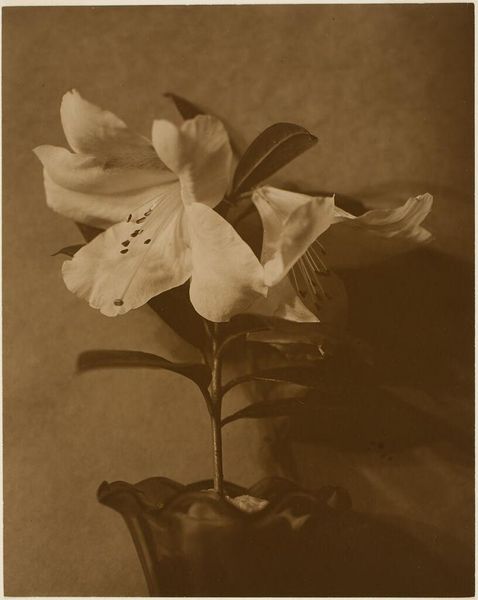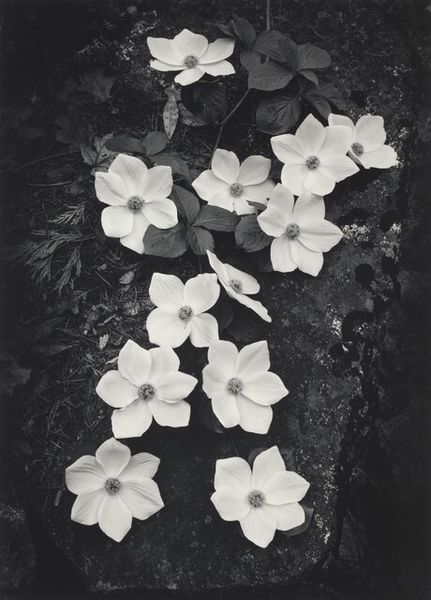
drawing, print
#
drawing
# print
#
line
#
monochrome
Dimensions: Image: 749 x 749 mm Sheet: 794 x 800 mm
Copyright: National Gallery of Art: CC0 1.0
Curator: Right now, we're looking at a print called "Flower" by Lowell Nesbitt, created in 1974. Editor: Oh, my! It feels rather imposing, looming almost threateningly. The stark contrast between the monochrome flower and the black background gives it this edgy quality. Curator: Nesbitt was very interested in exploring traditionally beautiful subjects, such as flowers, and rendering them with an almost clinical, precise line. The overall effect does move past beauty toward something unsettling, even a bit… spectral. Editor: Exactly! The choice to depict the flower in such high contrast, and the patterned, almost cellular details that cover its petals, suggest disease or decay. I’m immediately drawn to thinking about the ephemeral nature of beauty. Curator: The cultural symbolism of flowers has long revolved around beauty, but also life cycles, mortality... and Nesbitt certainly engages with the latter here. The scale, magnified and isolated against that solid dark backdrop, lends it that isolating feeling. Editor: Yes, I find myself thinking about momento mori, the tradition of reflecting on one’s own mortality. Here, we see a flower not in full bloom but at some advanced stage in its life. It reminds us of our own inevitable return to the earth. It's potent, isn't it? Curator: Absolutely. It asks us to think about how beauty and decay are so closely intertwined. The more you observe the delicate cross-hatching that shapes the flower, the more you see the passage of time etched into it. Editor: And the lack of color enhances the sensation. Without color, we are left with stark shapes and subtle gradations, inviting us to examine the intricate construction of life and death. Nesbitt’s work provides us a chance to engage in what remains essential. Curator: I agree completely. A study in the cyclical realities of existence, even when rendered through something as traditionally simple as a flower. Editor: It definitely subverts any simple readings we might expect. It's left me thinking more about mortality and regeneration, all framed in such a visually stunning manner.
Comments
No comments
Be the first to comment and join the conversation on the ultimate creative platform.
